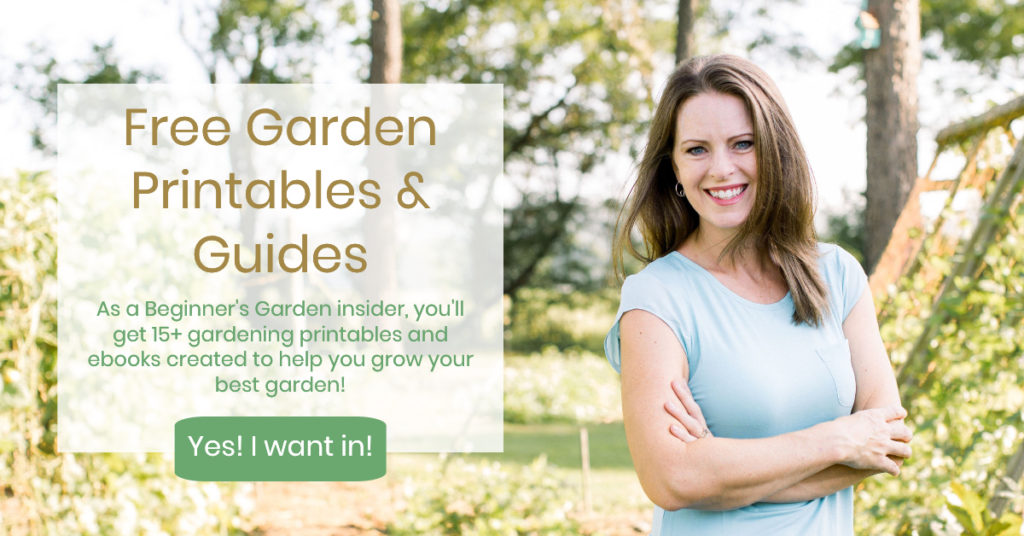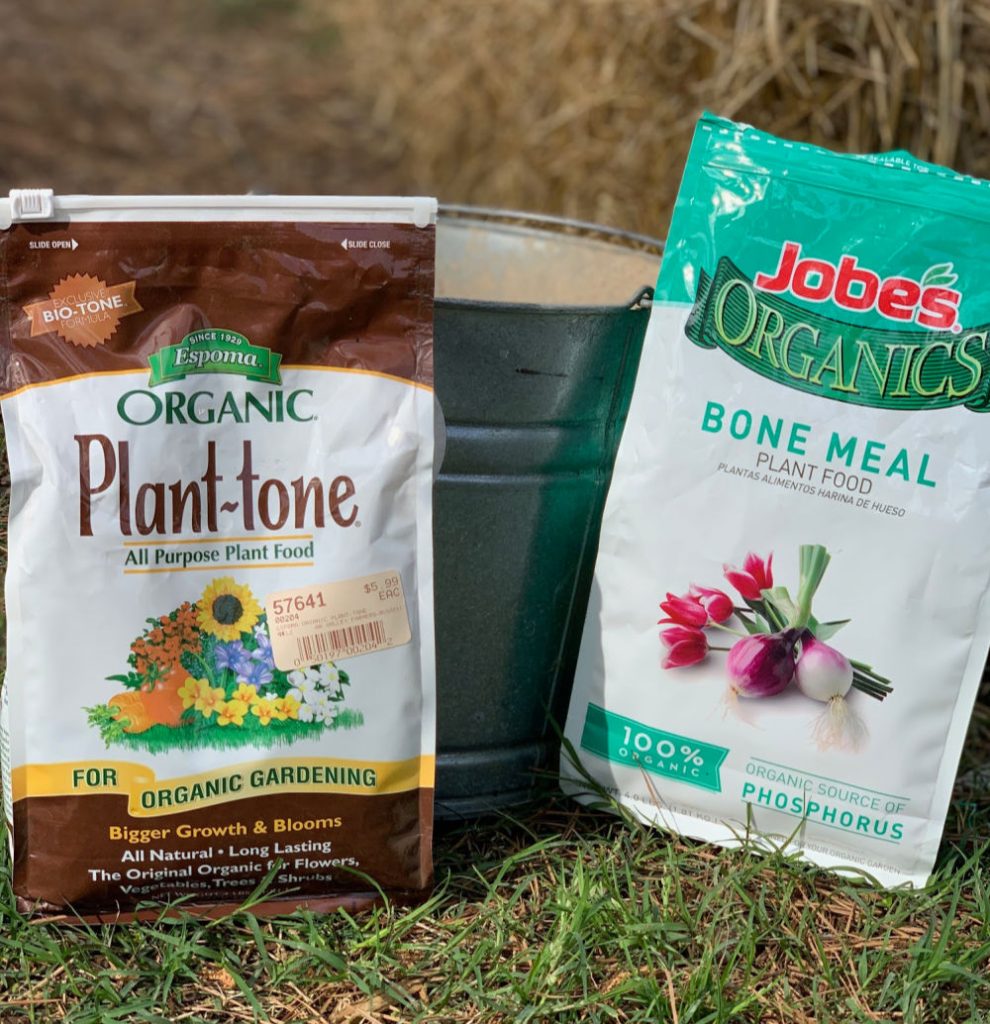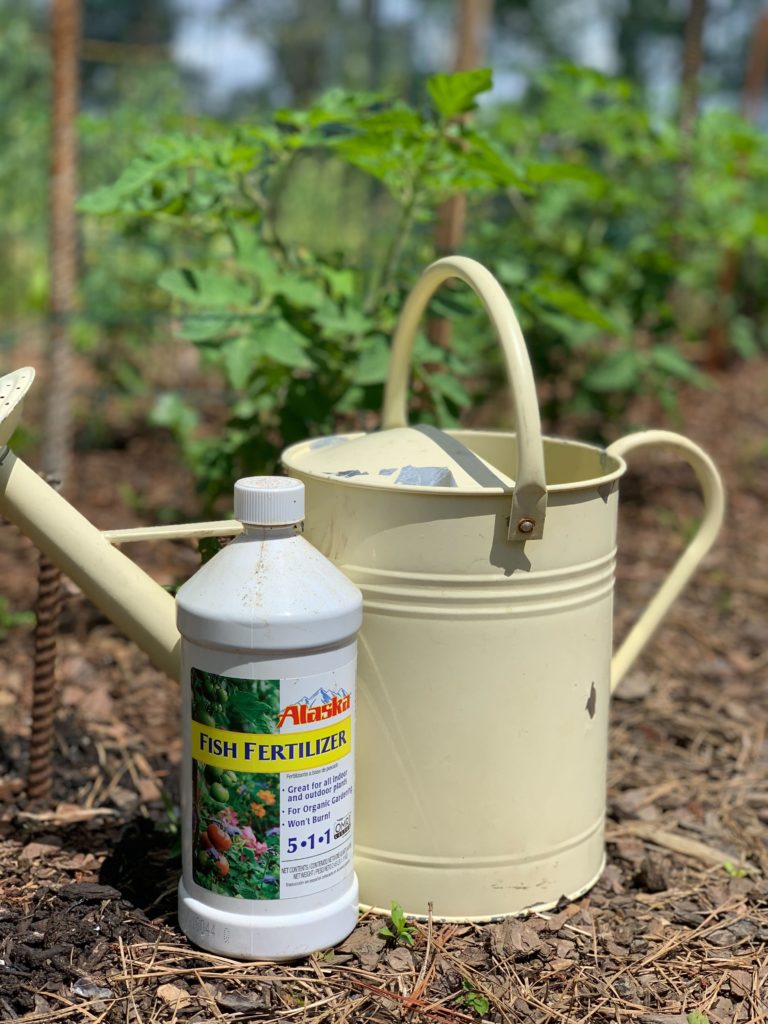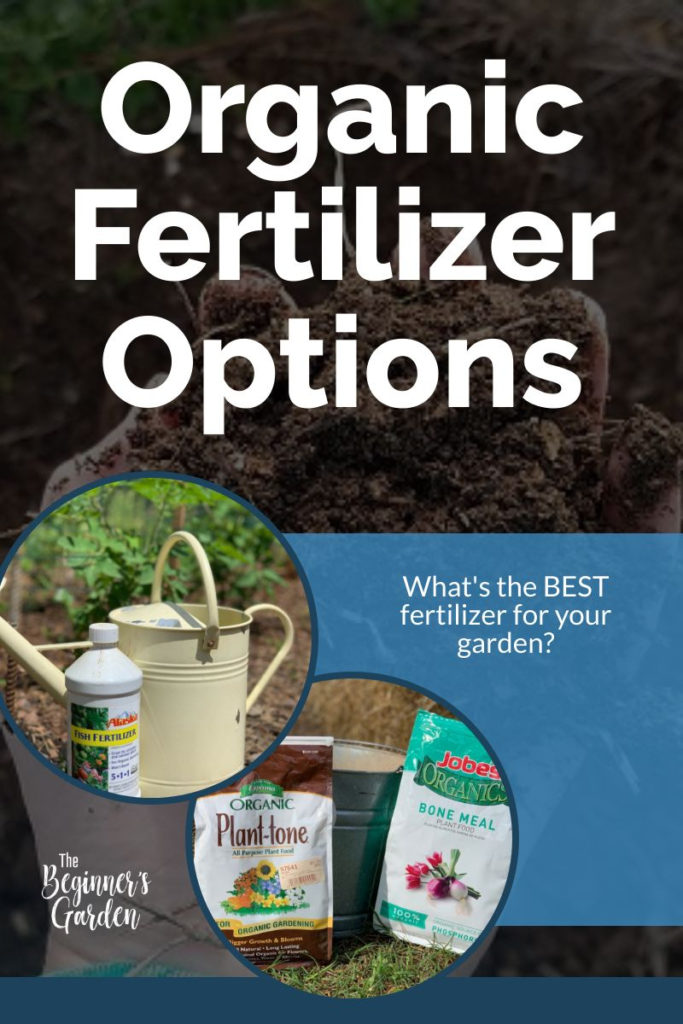Organic Fertilizer Options
You’ve probably heard it said that soil quality and fertility is paramount for a successful garden. You probably even know that compost is one of the best amendments you can add to your soil. But what about organic fertilizers?
I frequently get questions about organic fertilizers — specifically, what to use and when to use it. For this topic, I turned to Joe Lamp’l and in this episode of the Beginners’ Garden Podcast and the blog post below, we talk about organic fertilizer options.
You might have already heard my interviews with Joe about tomato troubleshooting and irrigation best practices. And make sure you check out the Joe Gardener Show and Growing a Greener World on PBS.
Click below or continue reading for our discussion.
*links below contain affiliate links
Compost vs. Fertilizer
What is the difference between compost and organic fertilizer?
Fertilizer provides nutrients, but it doesn’t build the soil the way compost does. Compost includes nutrients, of course, but it also helps to build the soil by providing trace minerals, beneficial fungi, and bacterial. If you build your soil with high-quality compost (and continue adding once or twice per season, you may not need fertilizer!

Organic vs. Non-organic fertilizer
Organic fertilizer slowly releases its nutrients over time, and as such, it doesn’t leach out of the soil fast. Synthetic fertilizers release a quick burst of nutrients but what isn’t taken up by the plants is released into the environment.
Synthetic fertilizers are chemically identical to organic fertilizer. But there are problems with synthetic fertilizer. Because synthetic fertilizers are water-soluble, unused nutrients leach out quickly, causing toxic runoff into our waters, rivers, and oceans. And because of the fast leaching, gardeners have to continue to apply fertilizers, creating a cycle of chemical fertilizer dependency. Synthetic fertilizers also harm soil life that makes natural nutrients available to plants, further exacerbating the dependency on chemicals.
Organic fertilizers more slowly released in the soil and they remain in the soil instead of running off. In appropriate amounts, they don’t harm micro-organisms on the soil and instead contribute to building healthy soil while providing nutrients to plants.
When do you need to use fertilizer?
One of the most common mistakes new gardeners make is to over fertilize. We want a quick fix and assume that any problem with our plants could be a deficiency in the soil. In reality, there are many other things it could be. Plants show stress with watering — too much or too little. Or sometimes cool springs or hot summers can signal stress as well.
But if other outside forces don’t seem to be the problem, the best recommendation is to get a soil test. With a soil test, you can know for sure if your soil lacks necessary nutrients.

Common Fertilizer Options
When you do need to use a fertilizer, these are some common options for you:
Organic, All-Purpose Granular Fertilizer
An organic, all-purpose granular fertilizer will be good for delivering the big 3 nutrients over time — Nitrogen, Phosphorus, and Potassium. You won’t have to wonder if you need one thing more than another, but it would be better to test your soil before supplementing. It is best to mix the fertilizer into the soil, mostly the top 6-8 inches, so that the nutrients are available as the root system grows.

Bone Meal and Rock Phosphate
Both bone meal and rock phosphate are great sources of phosphorus if your soil is deficient. Make sure you do a soil test first because phosphorus will build up in the soil (causing adverse effects) and you want to add only what is needed. Keep in mind, these sources take time to break down into a form that the plants can use, so apply to your soil several months before planting for best results.
Blood Meal
Blood meal is a great, slow release nitrogen source. Nitrogen is important as plants are becoming established.
Fish Emulsion
Fish emulsion is a liquid source of nitrogen. If you need a quick source of nitrogen, this is a great source because it is ready to be used by your crops. You dilute the solution in water and it is able to go straight to your root system.

Seaweed Fertilizer or Liquid Kelp
Seaweed fertilizer or liquid kelp are often used as a foliar spray and is more effective on the leaves than the soil. Use it during the growing season if you see your plants could use a low dose of nutrition.
Potassium Sources
Options for supplementing potassium are greensand or sulphate of pot ash. Again, make sure to do a soil test to determine if you need to add potassium.
How to Add Organic Fertilizer
For granular fertilizers, work it into the soil before planting. If you want to add it to existing plants, sprinkle a ring around the “drip line” — the ground beneath where the edges of the leaves extend.
For liquid fertilizers, follow the instructions on the container. For fish emulsion, you will need to dilute in water and add to the soil around the plant. For liquid kelp, dilute in a clean spray bottle and apply to the leaves.
Conculsion
In a perfect garden, compost and high-quality soil will provide all you need to feed your plants. But there are times when supplemental fertilizer may be needed.
It’s always best to test your soil, but even if you can’t always do that, adding organic fertilizers is always a safer bet for an organic garden than any kind of synthetic options.
Do you get overwhelmed with garden planning?

Subscribe here for my best tips to plan your garden in just 7 days -- all for FREE.
Plus, I'll send you my "In the Garden E-mail" on Fridays, periodic updates on garden resources relevant to you, and you'll receive access to my entire bank of free garden downloads!
You are also agreeing to our privacy policy.


Is it ever appropriate to put a layer of compost in the garden mid-season as a way to fertilize? I did mix in at start of season and will do at end of season but what about mid season?
One of my gardens is a sqaure foot garden. I do mix compost in after harvesting a square, but I also have a native/edible mixed garden and was wondering if I should put some there.
Thank you
Absolutely! I did that yesterday, in fact, after I took out my pea crop and planted my next tomato crop. You can do a layer between crops, like I did, or put it around the crops as a “top-dressing,” using it as mulch. (Just be careful that if it’s your homemade compost and if it didn’t get “hot” enough, it will likely sprout a lot of seeds.)
Can you please comment on where to go for soil testing and how to read your report?
Personally, I use my state’s cooperative extension service. Reading the report isn’t so easy; I’ve had to do my own research on that, though my state provides a document online that helps in understanding it. Here’s another post where I go into more detail on soil testing: https://journeywithjill.net/gardening/2018/10/23/garden-soil-testing-a-beginners-guide/
This one is really helpful for a beginner. Lots of information about fertilizers are given and that is very helpful. Keep sharing more articles like this. Good job!
Thank you!
Hy Jill McSheehy
Thanks for sharing this information with us by blog so that people can better understand the Organic fertilizers Options available in the market and get the proper benefits in their gardens. Thanks again
Thanks Jill, for sharing these knowledge and information. I am glad to have read about this article and have known the difference between those different options using different fertilizers.
Thank You, Jill, For Writing This I’ve Read Many Many Posts about organic fertilizers options but Yours Is By Far The Best, Simple, Sweet, and Solid. I Will Be Definitely Looking Into More Of What You Write. Thank You For Sharing Your Words.